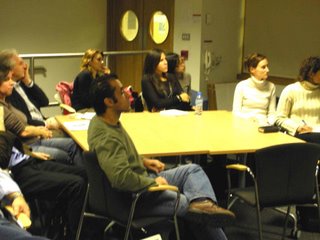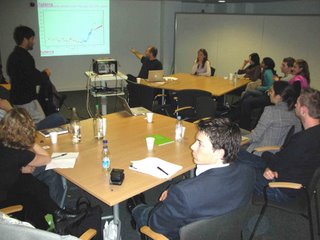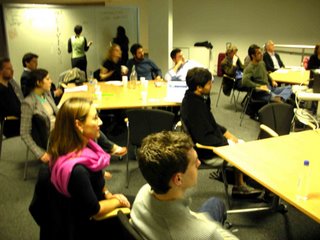FUTERRA - ART & ACTIVISM

Futerra have been working as a communications design agency focussing on climate change. Ed Gillespie spoke about the research that supports climate change. His big question is how do we get people involved in climate change in a way that changes behaviour. Futerra asked themselves this question and place a great emphasis on cultural channels to change attitudes to climate change.
Ed challenged us to ask our MPs to make policy change.
Ed highlighted some of the things that environmentalists get wrong.
He talked of blowing away the myths
Audience Rules
We need to use transmitters and social learning - using people to talk about the issues, rather than high profile ad campaigns
The map of the discourse
awrrkwesin , british comis nihilism
Style Rules
Better to light a candle than to curse the darkness
Urban pollution in China is focussing peoples attention - for example in Chongquin (32 milliion)
Crisis = danger + opportunity (the Chinese symbols)
There is a huge opportunity to work with the challange. Although there is no magic bullet.
How do we engage people's hearts and their minds.
The cultural channels are so important because we need to touch peoples hearts.

"Human history is a race between education and catastrophe." HG Wells
Climate change is increasingly going mainstream. Rover are offering to offset the Carbon on a Land Rover.
Did Shakespeare write of climate change 400 years ago in A Midsummer Night's Dream
Art as a channel for challenging peoples perspectives. The artists, Damien Hirst, had the idea of bottling all of his C02 emissions for a year. The Cape Fear tour took a number of artists on boats to the Antarctic. Anthony Gormley made a snowman! Its hard for Art to deal with environmental questions in a positive way. Art likes doom and desolation. however this can make the people do less. Because Art like the apocalytpic. The weather project at the Tate Modern felt like it was all about climate change. I'm not sure everyone would have had the same reaction. Similarly Martin Creeds lights going out and on also reminded me of impending crisis - but this may not have been everyone's interpretation.

Interpretation of specific works can be subverted. The Haywain launched English Conservation, an unintended consequence. The famous blood head by Mark Quinn was parodied by the creating of an ice sculpture of Tony Blair. But do these interventions actually make a diference. Do they make us change our behaviour?
There are also opportunities for major public sculptures. The Wee Man showed the amount of electrical equipments we dispose of in our lives. Its very impressive. How are we able to adapt these ideas to enable us to think about climate change.
Mark McGowan left a tap on in a gallery which caused an outrage. He parked a car in a gallery in Peckham and ran his car with a pipe to the outside world. These subvert our ideas about what things are going on everyday.
When the Carbon Trust went to an advertising agency they came up with an atom bomb which totally scared people - the wrong idea.
The metaphors are going in the wrong direction. Melt = life. Frozen = death. These are not clever about the messages.
How do we make the invisible visible?
Richard Box put light tubes in the ground under the magnetic fields of a powerline - which made the energy field visible.
Where are the provocations? Where are the situationist artists for climate change. A herd of Jersey Cows were kept on an estate for a week "the Udder Way".
More complicate subjects - Michael Landy's Breakdown took place in the heart of Oxford Street. He destroyed everything he owned in the world, an anti-materialist message. Other interventions include "Buy Nothing Day" - a shop with no products, empty shelves, an empty bag, and environmental messages on the till slip. A shop full of bewildered people.

Simon Starling create "mission Art" - a hydrogen fuel celled bike which he rode across the desert and after wards used the emissions (water vapour) to create a painting of a cactus.
Posters can be used to satire public information posters. Campaiging organisation sometimes get it wrong. "The Day After Tomorrow" was sensationalist and didn't get people to change their behaviours.
How can we use alternative approaches to get people to think differently about big challenges.
Poussin painted rising images of alternative futures. Where are the utopian images of our climate adapted future. Who is reflecting our desires for a climate adapted lifestyle - the new ruling aesthetic. We tend to do the dystopia. We have a real oopportunity to do something different.
If Martin Luther King had stood up and said - I have a nightmare. Would we still be talking about his speech today. What he did was say "I've got a Dream". This encapsulates the Futerra approach - people will run toward a climate secure future.
Negative scenarios don't appeal to many.
Its about a postive vision and motivating.




 subscribe to our feed
subscribe to our feed
0 Comments:
Post a Comment
<< Home